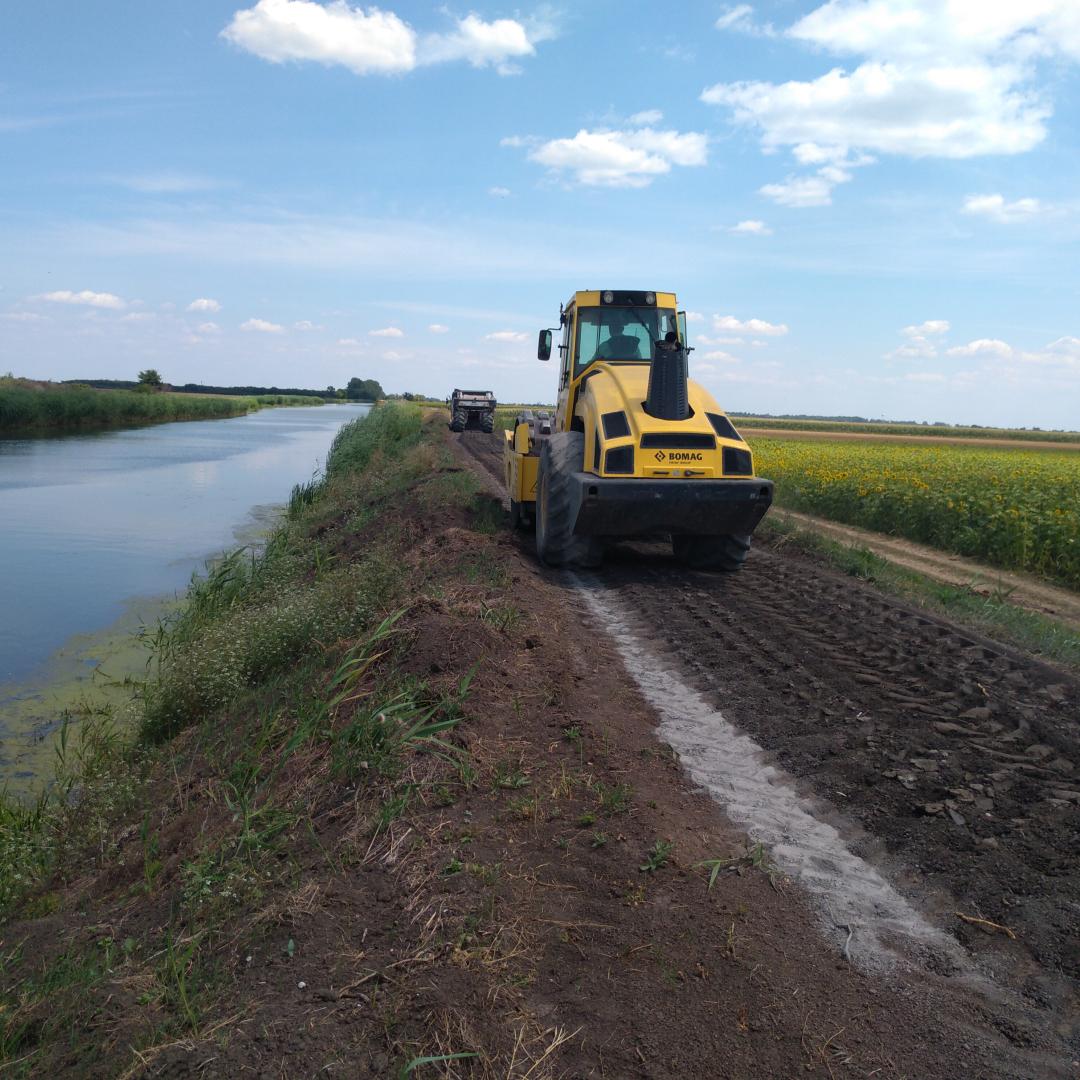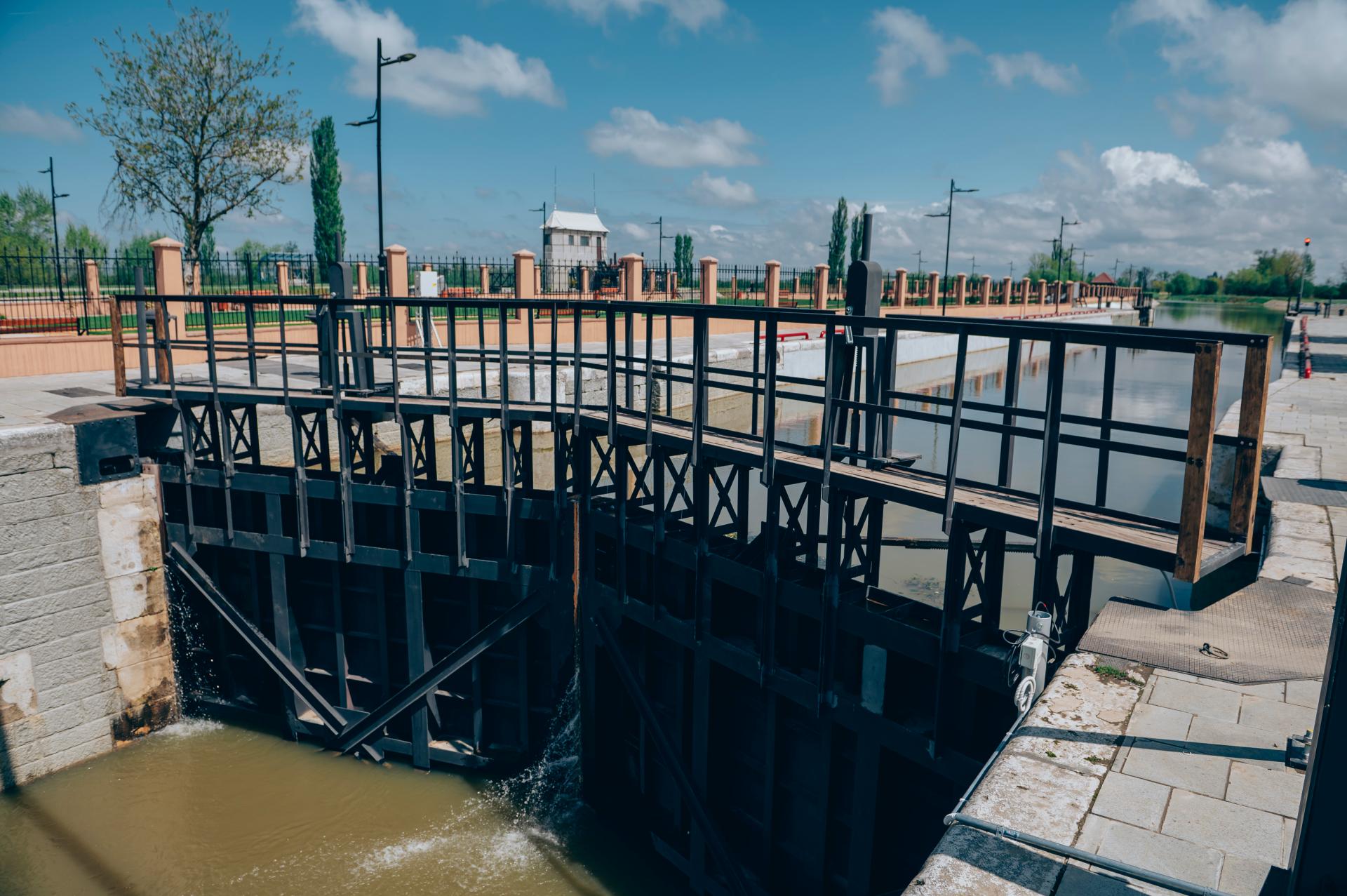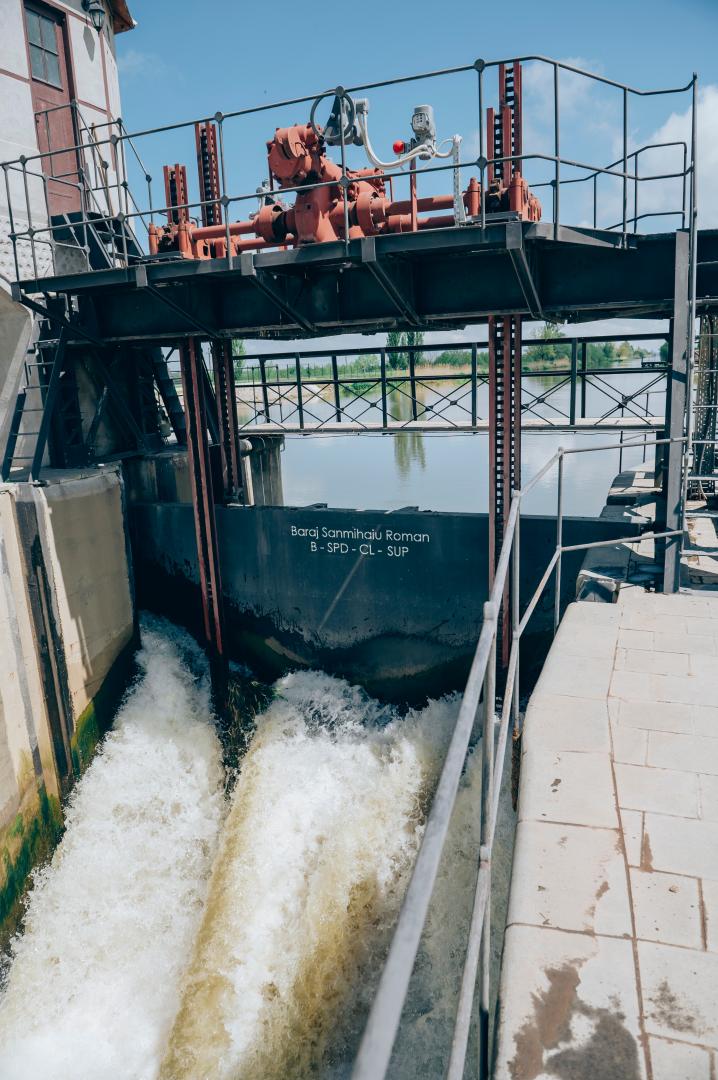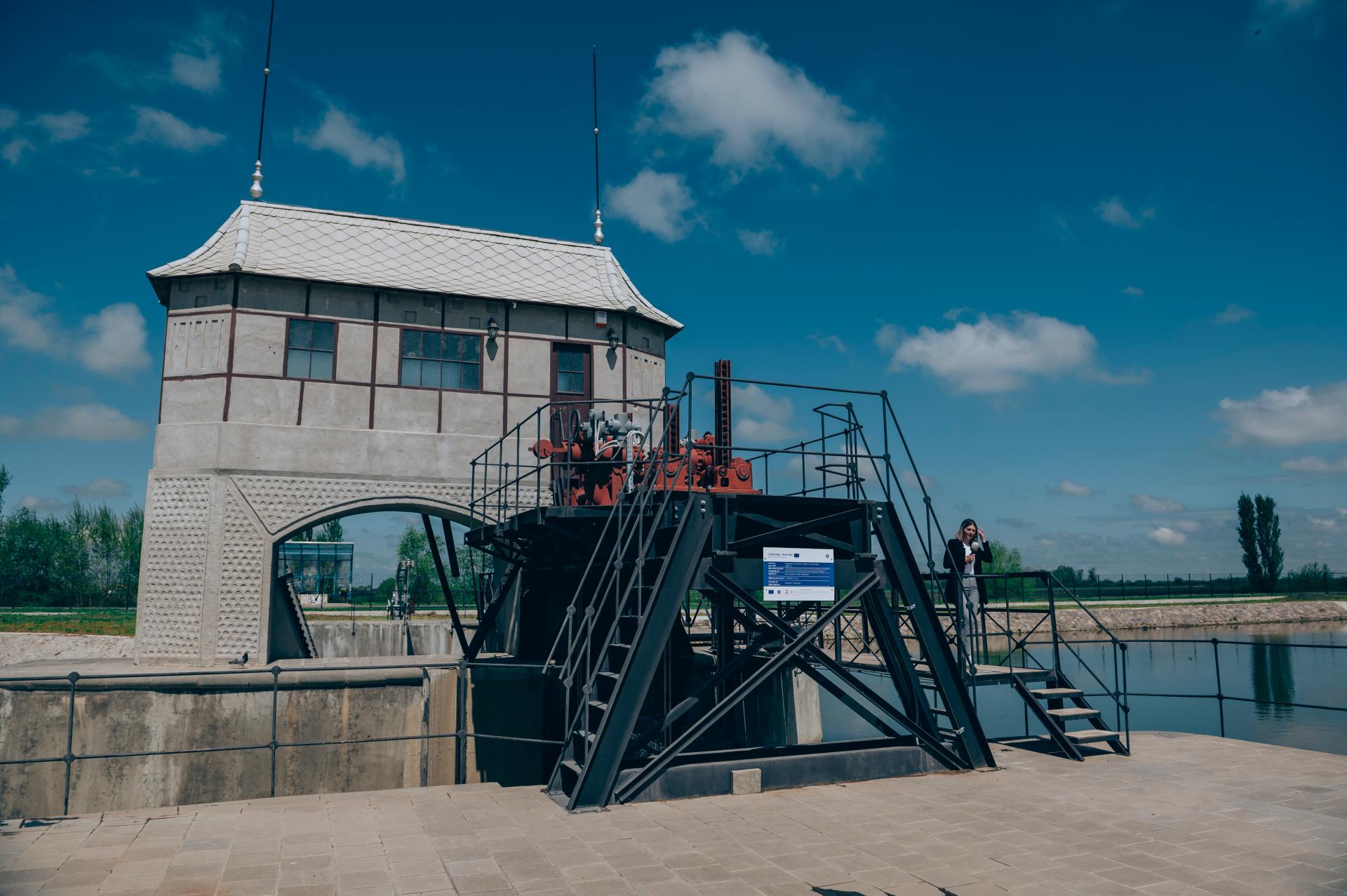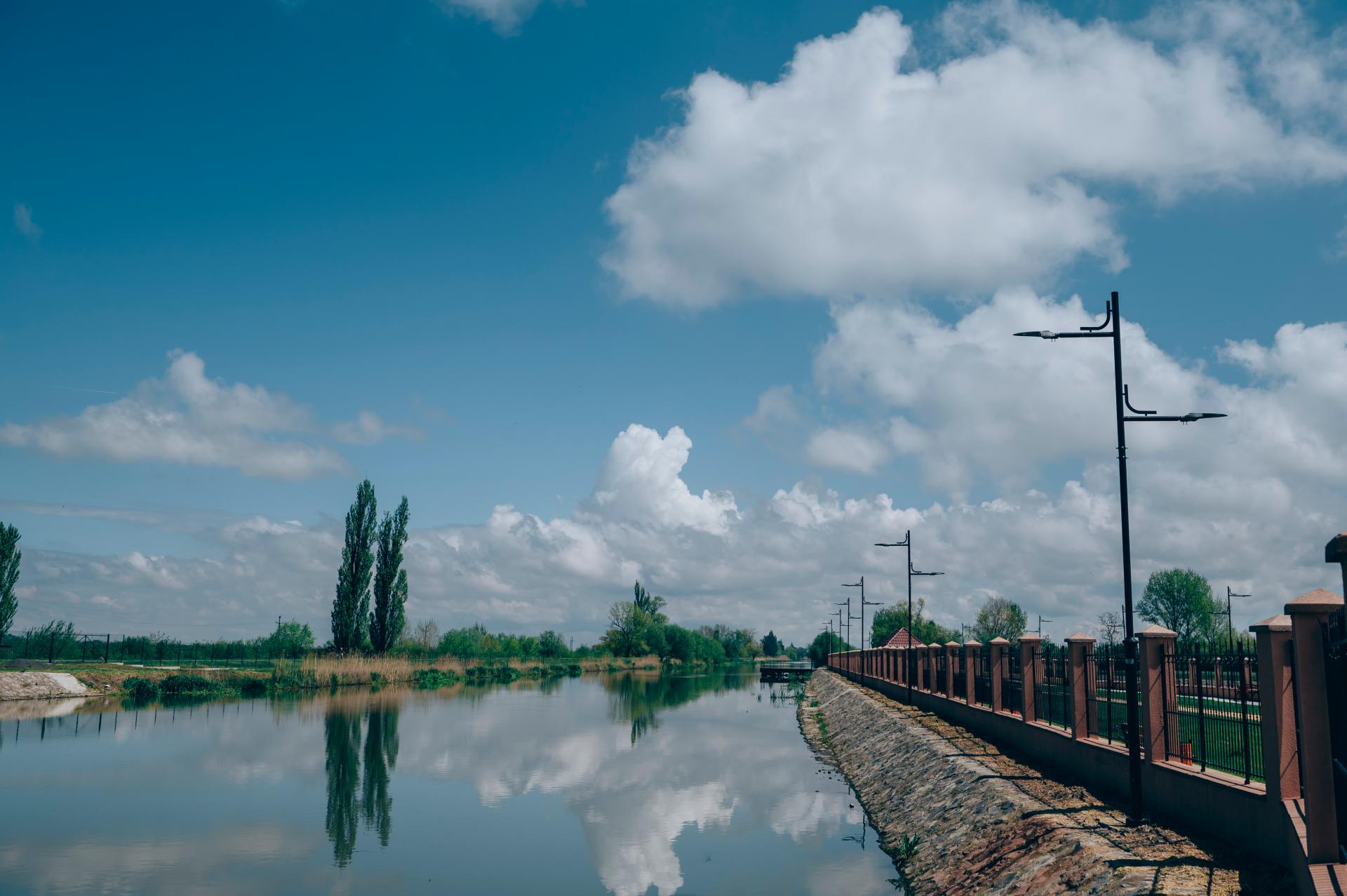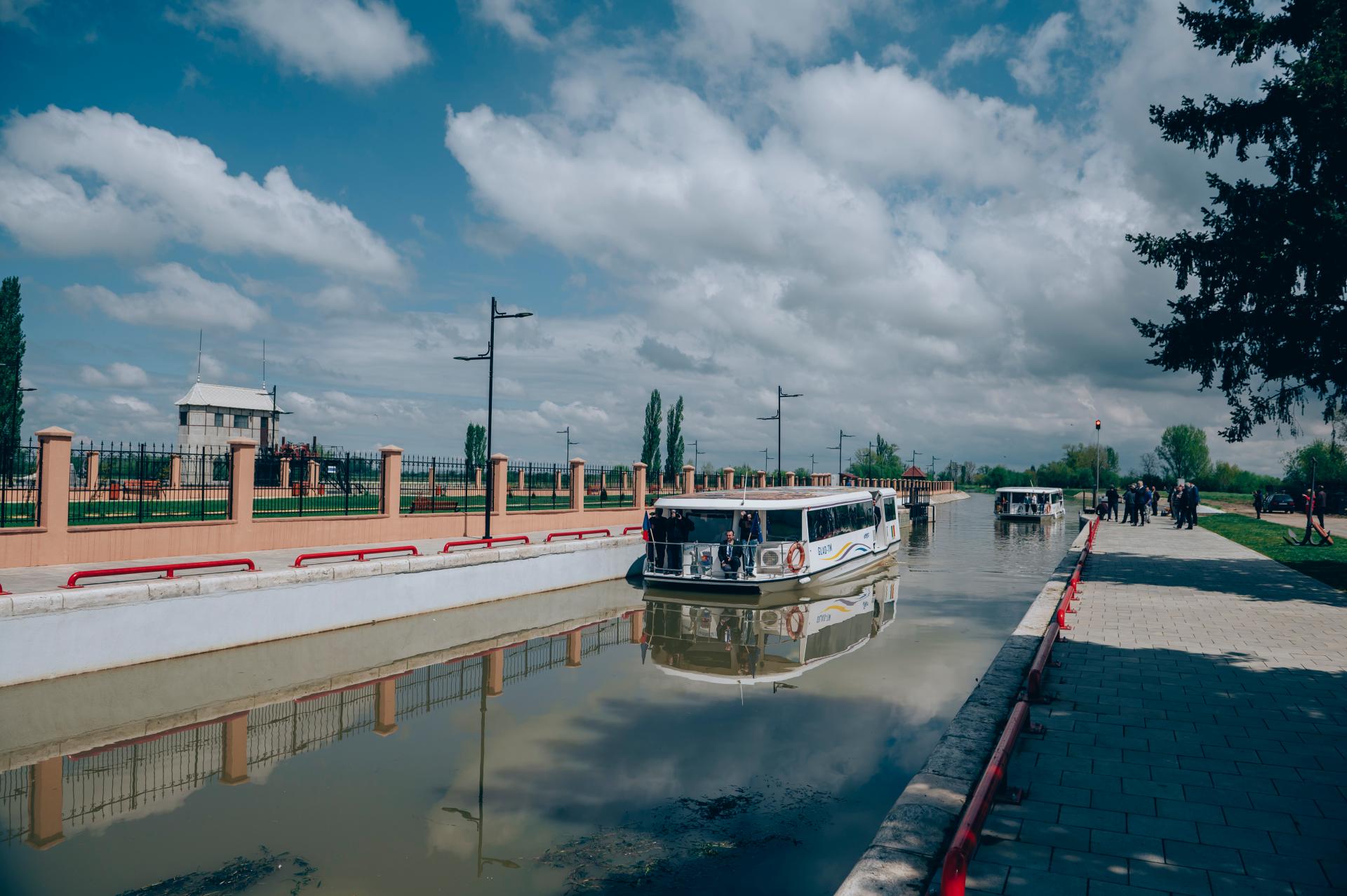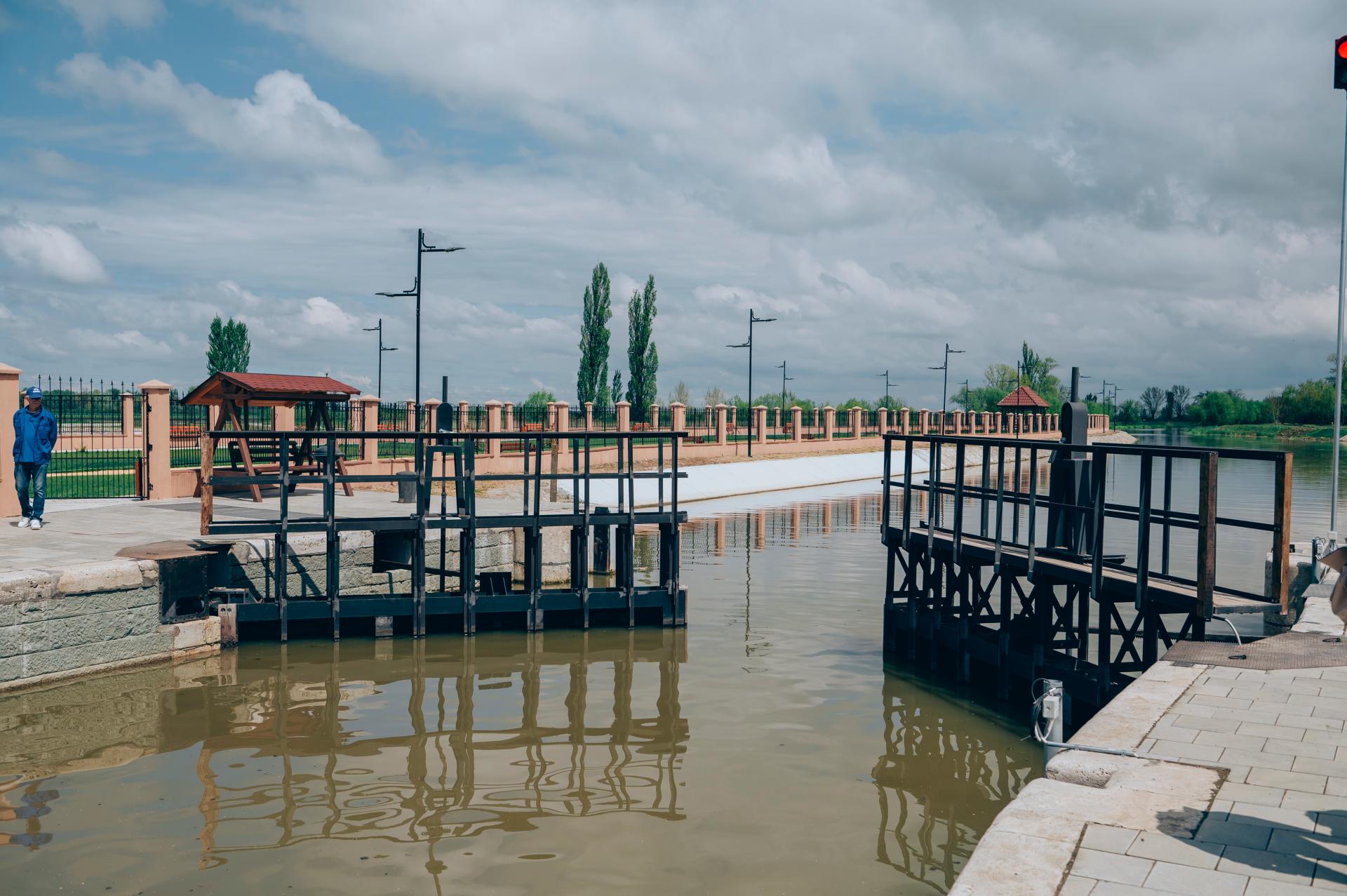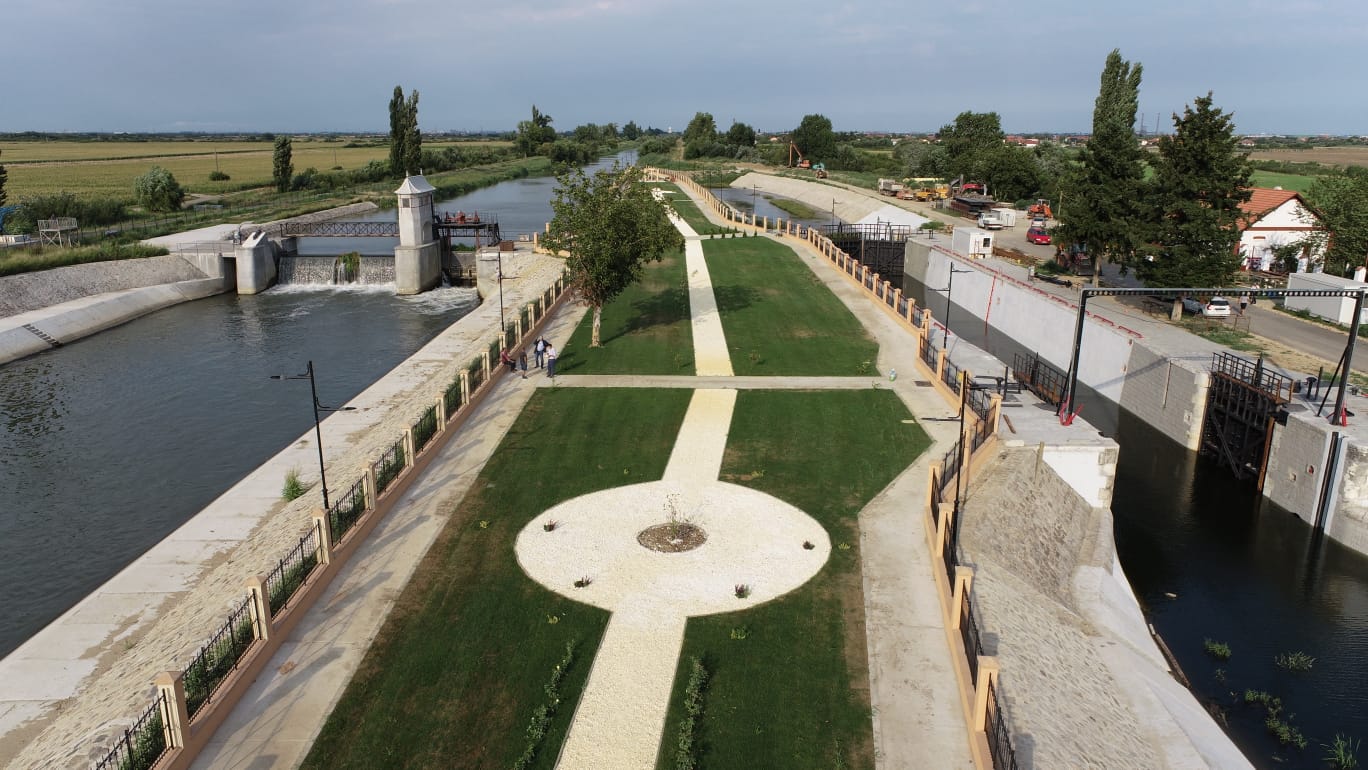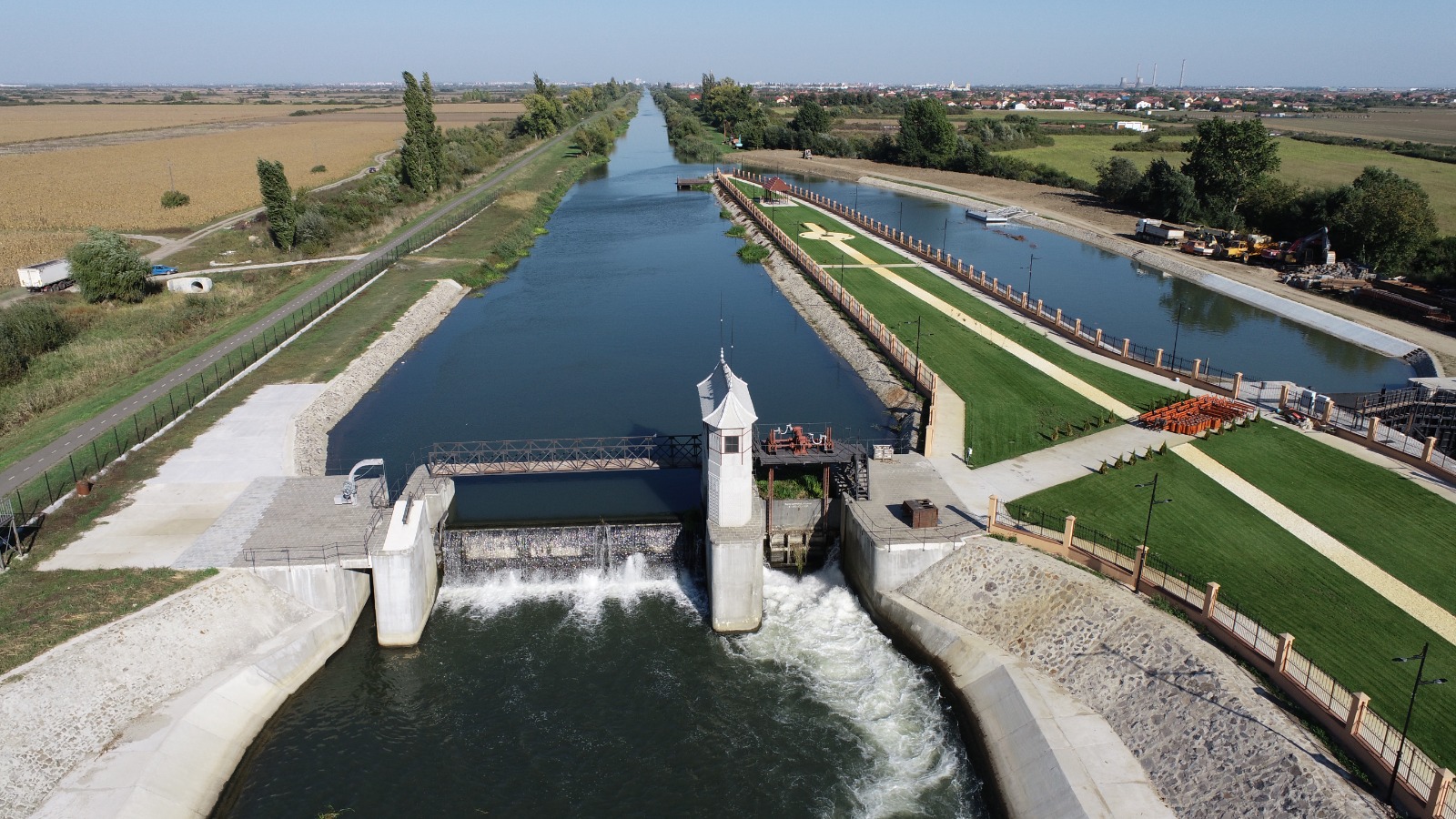RORS 15
Basic information
Project Title
RORS 15
Full project title
The repairing of the navigation infrastructure on Bega Canal
Category
Prioritising the places and people that need it the most
Project Description
After more than 70 years, an important European cross-border waterway between Romania and Serbia was revived through common efforts of 4 partners involved in a project funded by INTERREG IPA Romania - Serbia. As a result, Western Romania and Vojvodina will be linked with Northern Sea and Black Sea as part of the European river network and will promote an environmentally friendly means of transportation and contribute to the development of tourism in the area.
Geographical Scope
Cross-border/international
Project Region
CROSS-BORDER/INTERNATIONAL: Romania, Serbia
Urban or rural issues
It addresses urban-rural linkages
Physical or other transformations
It refers to a physical transformation of the built environment (hard investment)
EU Programme or fund
Yes
Which funds
IPA : Instrument for Pre-Accession Assistance
Description of the project
Summary
The main focus of the project was to revitalize a waterway connection between Romania and Serbia – the Bega Canal, built in the 18th century – in order to meet the development needs of the communities on both sides of the border. Although it has been used for a long period for the transportation of goods and passengers, since the 1960’s the circulation on the Bega Canal has been stopped. Concentrating common efforts of 4 partners from Romania and Serbia - Timis County, Water management company Banat, Province of Vojvodina and Water management company Vode Vojvodine – a project was designed to tackle the obstacles that did not allow the usage of such an important water connection. Funded via the Interreg-IPA Cross-border Cooperation Romania – Serbia Programme, the project, with a joint budget of more than 13 million euros, allowed the repair of the locks in Sanmihaiul Roman (on the Romanian side) and Srpski Itebej and Klek (on the Serbian side) thus ensuring conditions for the circulation of leisure boats. Moreover, in terms of sustainability, the project provisioned the acquisition of equipment that would be used in the long-term maintenance of the canal – dredges, barges, and aquatic harvesters – creating the conditions for the future development of this connection. After the completion of the project in 2023, after more than 60 years of absence, the first ships from Romania and Serbia crossed the border, reopening a long-lasting tradition of mutual relations among the communities in the border area. The reopened canal will allow synergy between green means of transportation and the use of the beautiful areas of Bega Banks to develop tourism in the area. Additionally, the cycling lane on the banks of Bega Canal, also completed through the project, has become an attraction for cyclists from the region and will be further developed by being included in the EuroVelo 13 route.
Key objectives for sustainability
The main objective of the project was to promote cross–border sustainable transport and mobility infrastructure improvement for the shaping of the Bega Canal area as an internationally recognized destination for outstanding tourism experience, diverse cultures, integrated communities and protected nature. Increasing cross–border competitiveness by improving the accessibility and connectivity of the cross-border region through raised transport and mobility infrastructure standards in accordance with the natural landscape has been at the heart of the project activities with a perspective on the long-term sound development of the area. Enhancing the Bega Canal Area as an internationally recognized, green, visitor-friendly destination was another key area that has been the focus of the project, with direct effects on both communities, local development, and involvement of local communities. In the long run, the revitalization of the canal will ensure a more connected region, with stronger ties and effervescent exchanges of experiences and cooperation.
Key objectives for aesthetics and quality
Revitalizing a waterway that is part of the common heritage of the communities from both sides of the border allows the reunion, after more than 60 years of the people on both sides of the border and joint development of the region, in harmony with the preservation of the natural landscape of the area. Reconnecting the traditional ties and the cultural and social lives of the citizens living along the Bega Canal will become increasingly intertwined, with benefits for the whole area in the long run. The interest of the communities was manifested throughout the period the implementation of the project and has constantly increased after it’s completion. Currently, the communities along the canal are identifying new ways of integrating the canal into their future development plans, building upon the results of the revitalization of the circulation of ships and the interest shown by tourists for this connection.
Key objectives for inclusion
The perspectives offered by this newly revitalized waterway provide means for the involvement of both public entities and private investors for a future joint effort in developing the area. Moreover, future cooperation between the two neighbouring countries – Romania and Serbia – and of the regions in the border area – Timis County and Autonomous Province of Vojvodina – will allow the design and implementation of complementary projects that will draw more attention to the canal and thus contributing to the enhancement of the social and economic conditions in the area. The integrated development of the communes along the Bega canal, together with the municipalities of Timisoara and Zrenjanin will conclude in a sound and durable construction with a focus on the preservation of the environment and use of natural heritage for the sake of attracting more interest to the area.
Results in relation to category
The concrete result of the project was the rehabilitation of the technical elements along the Bega Canal – locks at Sanmihaiu Roman, Srpski Itebej, Klek - in order to ensure the resuming of the navigation on Bega canal. The acquisition of specific equipment for the future maintenance of the canal was another result of the project with long-term effects on both usage of the canal and environmental impact of the revitalization of circulation of ships. Moreover, these activities would lead to a new approach regarding the overall development of the riveran area of Bega canal, ensuring conditions for both communities and individuals to get involved in social and economic endeavors with direct effects on the wellbeing in the area. On the long term, the project lays the grounds for future cooperation between the two neighboring states and common usage of the cultural, social, natural heritage as an engine for elimination any disparities in the area, exchange of experiences for the benefit of local and regional communities.
How Citizens benefit
The communities along the canal, as direct beneficiaries of the revitalization of this waterway, have been the focus of the project, and they will be the recipients of the results of the implemented activities. An appeal to the common memory was made when the design of the project took place so that the previous transport activities on the canal could be restored to their initial value. Moreover, the future benefits of a lively water connection between two neighbouring states over a border will reflect in the strengthening of the ties between people, the rediscovery of common heritage and the exploitation of those resources for the overall development of the regions.
Physical or other transformations
It refers to a physical transformation of the built environment (hard investment)
Innovative character
From the institutional point of view, the proposed project strengthened the cooperation between Romania and Serbia through their representative institutions focusing on a common infrastructure element that crosses an interstate border. From the social point of view, the project benefits reach communities by providing a specific framework for regional development, improvement of the living standards of citizens through the ability to conduct a series of recreational activities in the natural setting. From the technological point of view, the project partners purchase special equipment which will be used to ensure navigability on the Bega Canal. Once the necessary works were done, navigability on the Bega Canal is possible, which has a lasting effect beyond project duration. When transport systems are efficient, they provide economic and social opportunities and benefits that result in positive multiplier effects, such as better accessibility from one place to another and additional investments. Transport also carries a significant social and environmental load, which must be addressed. Making alternative transport infrastructure for recreation and leisure in the cross-border area is essential for balanced economic and social development and for the promotion of tourism and cultural exchanges. Leisure and recreation tourism over short distances is an alternative to classic tourism, with great contributions to reducing pollution and raising the level of satisfaction of the population. The tourism and recreational sector will receive new opportunities by initiating activities related to the Bega Canal. Romanian and Serbian contractors' and shipyards' profits will increase due to orders caused by the Bega Canal revitalization.
Disciplines/knowledge reflected
To put the basis of further partnerships and investments for the Bega Channel cross–border area, the project partnership selected foreground investments projects (from the agreed portfolio), for whom technical studies and terms of references for design and engineering were prepared and agreed to take the first concrete steps towards the revitalization of the waterway. In this respect, specialists in the fields of strategic management, engineering, technical design of waterways, and river navigation have worked together to come up with the most efficient and modern solutions as to fit the needs of the project. The result was that the navigation of ships on the Bega Canal was resumed in 2023 and will be continued and further enhanced.
Methodology used
Taking into consideration the common territorial challenges, the project initiatives are aimed at revitalizing the Bega Canal, both in terms of infrastructure and construction of a specific framework meant to lead to a sustainable development of the tourism attractions, create new jobs and attract foreign tourists.
The project was constructed on a four pillars approach:
- RELEVANCE: Inland waterways play an important role in freight transport in Europe. More than 37000 kilometres of waterways link hundreds of cities and industrial regions. Of the previously 28 EU Member States, 20 inland waterways, of which 12 are interconnected waterway networks. The growth potential of the modal share of inland waterway transport, however, is significant. Compared with other modes of transport, which are often confronted with congestion and capacity problems, inland waterway transport is characterized by reliability, reduced environmental impact and high operating capacity. The European Commission aims to promote and strengthen the competitive position of inland waterway transport in the transport system and to facilitate its integration into the intermodal logistics chain.
- STRATEGIC VALUE: Starting in 2013, a committed and balanced partnership was set in order to implement the previous project titled ”Joint development of Romanian-Serbian Bega Canal tourism potential capitalization study and promotion of cross-border foreground investments”, financed within „Romania-Republic of Serbia IPA Cross-Border Cooperation Programme 2007 - 2013”.
- TANGIBLE IMPACT: The reference area defined by the Bega Canal stretches over a length of 44 km from Timisoara to the border with Serbia, 75 km in the province of Vojvodina and includes two urban centres of the economic development of the cross-border area - Timisoara and Zrenjanin, targeting a population of over 500,000 inhabitants (334,000 in Timis), belonging to neighbouring communities.
- LONG LASTING EFFECT for communities.
The project was constructed on a four pillars approach:
- RELEVANCE: Inland waterways play an important role in freight transport in Europe. More than 37000 kilometres of waterways link hundreds of cities and industrial regions. Of the previously 28 EU Member States, 20 inland waterways, of which 12 are interconnected waterway networks. The growth potential of the modal share of inland waterway transport, however, is significant. Compared with other modes of transport, which are often confronted with congestion and capacity problems, inland waterway transport is characterized by reliability, reduced environmental impact and high operating capacity. The European Commission aims to promote and strengthen the competitive position of inland waterway transport in the transport system and to facilitate its integration into the intermodal logistics chain.
- STRATEGIC VALUE: Starting in 2013, a committed and balanced partnership was set in order to implement the previous project titled ”Joint development of Romanian-Serbian Bega Canal tourism potential capitalization study and promotion of cross-border foreground investments”, financed within „Romania-Republic of Serbia IPA Cross-Border Cooperation Programme 2007 - 2013”.
- TANGIBLE IMPACT: The reference area defined by the Bega Canal stretches over a length of 44 km from Timisoara to the border with Serbia, 75 km in the province of Vojvodina and includes two urban centres of the economic development of the cross-border area - Timisoara and Zrenjanin, targeting a population of over 500,000 inhabitants (334,000 in Timis), belonging to neighbouring communities.
- LONG LASTING EFFECT for communities.
How stakeholders are engaged
This project required strong cooperation between Romanian and Serbian partners. Cooperation with Serbian partners was essential to make the Bega Canal a navigable one like in old times. The challenges set could not be efficiently resolved acting only at national/regional/local level because the Bega Canal links the two big cities of these two countries, Timisoara from Romania and Zrenjanin from Serbia. Consequently, better transport links would strengthen intra-region cooperation and activities (increase of passenger travel and contact among communities, tourism promotion), thus promoting socio-economic development and increasing the region’s competitiveness, improving the population’s quality of life. Considering its historical heritage and tourism potential, the local responsible actors and authorities have started to jointly analyse and agree upon some steps necessary to revitalise the Canal area. One of these steps was made by developing a common strategy for the capitalisation of the potential of Bega Canal. The formulation of the Bega Channel Development Strategic Program represented a complex and common activity that aimed to define a joint Romanian–Serbian strategic vision for capitalising on the tourism potential. This activity implied the formulation and the assuming of the Strategy and the Strategic Program by the local and regional actors that have competencies in the field. The project partners and other authorities involved in the Strategy formulating process agreed upon a joint project portfolio, meant to capitalise the identified tourism potential.
Global challenges
The project's outcomes have broader implications that address global challenges through localized solutions.
1. Infrastructure Development and Connectivity:
• Global Challenge: Lack of well-maintained
nfrastructure can hinder economic development and connectivity, both nationally and globally.
• Local Solution: The project's rehabilitation of the Bega Canal's technical elements, including locks, contributes to the resumption of navigation. This local solution directly addresses the global challenge of improving transportation infrastructure.
2. Environmental Impact and Sustainability:
• Global Challenge: Environmental degradation is a global concern, and sustainable practices are crucial for long-term well-being.
• Local Solution: By revitalizing the circulation of ships and acquiring equipment for canal maintenance, the project promotes environmentally friendly navigation. This approach mitigates the environmental impact of transportation, addressing global concerns about sustainable development.
3. Community and Economic Development:
• Global Challenge: Disparities in social and economic development are common challenges worldwide.
• Local Solution: The project creates conditions for communities and individuals along the Bega Canal to engage in social and economic endeavors. This local empowerment addresses global challenges by fostering inclusive development at the grassroots level.
4. International Cooperation and Diplomacy:
• Global Challenge: Promoting cooperation between neighboring states is essential for peace and development.
•Local Solution: The project lays the groundwork for future cooperation between the two neighboring states, fostering a collaborative approach to the management and utilization of cultural, social, and natural heritage. This contributes to global efforts in building peaceful relationships and shared resource management.
5.Cultural and Social Heritage Preservation:
• Global Challenge: Preserving cultural, social,
1. Infrastructure Development and Connectivity:
• Global Challenge: Lack of well-maintained
nfrastructure can hinder economic development and connectivity, both nationally and globally.
• Local Solution: The project's rehabilitation of the Bega Canal's technical elements, including locks, contributes to the resumption of navigation. This local solution directly addresses the global challenge of improving transportation infrastructure.
2. Environmental Impact and Sustainability:
• Global Challenge: Environmental degradation is a global concern, and sustainable practices are crucial for long-term well-being.
• Local Solution: By revitalizing the circulation of ships and acquiring equipment for canal maintenance, the project promotes environmentally friendly navigation. This approach mitigates the environmental impact of transportation, addressing global concerns about sustainable development.
3. Community and Economic Development:
• Global Challenge: Disparities in social and economic development are common challenges worldwide.
• Local Solution: The project creates conditions for communities and individuals along the Bega Canal to engage in social and economic endeavors. This local empowerment addresses global challenges by fostering inclusive development at the grassroots level.
4. International Cooperation and Diplomacy:
• Global Challenge: Promoting cooperation between neighboring states is essential for peace and development.
•Local Solution: The project lays the groundwork for future cooperation between the two neighboring states, fostering a collaborative approach to the management and utilization of cultural, social, and natural heritage. This contributes to global efforts in building peaceful relationships and shared resource management.
5.Cultural and Social Heritage Preservation:
• Global Challenge: Preserving cultural, social,
Learning transferred to other parties
Due to the dynamic of this project and the diversity of activities and works performed, it can be made into a replicable model after being adapted according to the specificity of the areas and intervention types.
It is possible to do some similar projects based on strong cooperation between competent institutions from different regions by putting in common the material and human resources, by actions meant to identify the needs and gaps of their region.
During and after the project implementation period, we organized information and promotion campaigns to increase the local public and private bodies' awareness about the benefits this project created and the development opportunities in the area in terms of tourism and mobility of people.
In this way, we offer the opportunity to other regions crossed by rivers or canals to develop such infrastructure in line with previous development of navigation and cycling networks in the EU. Improving transport alternatives and ecological and recreational inter-regional links significantly impacts the development of the quality of life of people living in the area.
It is possible to do some similar projects based on strong cooperation between competent institutions from different regions by putting in common the material and human resources, by actions meant to identify the needs and gaps of their region.
During and after the project implementation period, we organized information and promotion campaigns to increase the local public and private bodies' awareness about the benefits this project created and the development opportunities in the area in terms of tourism and mobility of people.
In this way, we offer the opportunity to other regions crossed by rivers or canals to develop such infrastructure in line with previous development of navigation and cycling networks in the EU. Improving transport alternatives and ecological and recreational inter-regional links significantly impacts the development of the quality of life of people living in the area.
Keywords
Cooperation
Waterway
Environment
Communities
Cross-border

